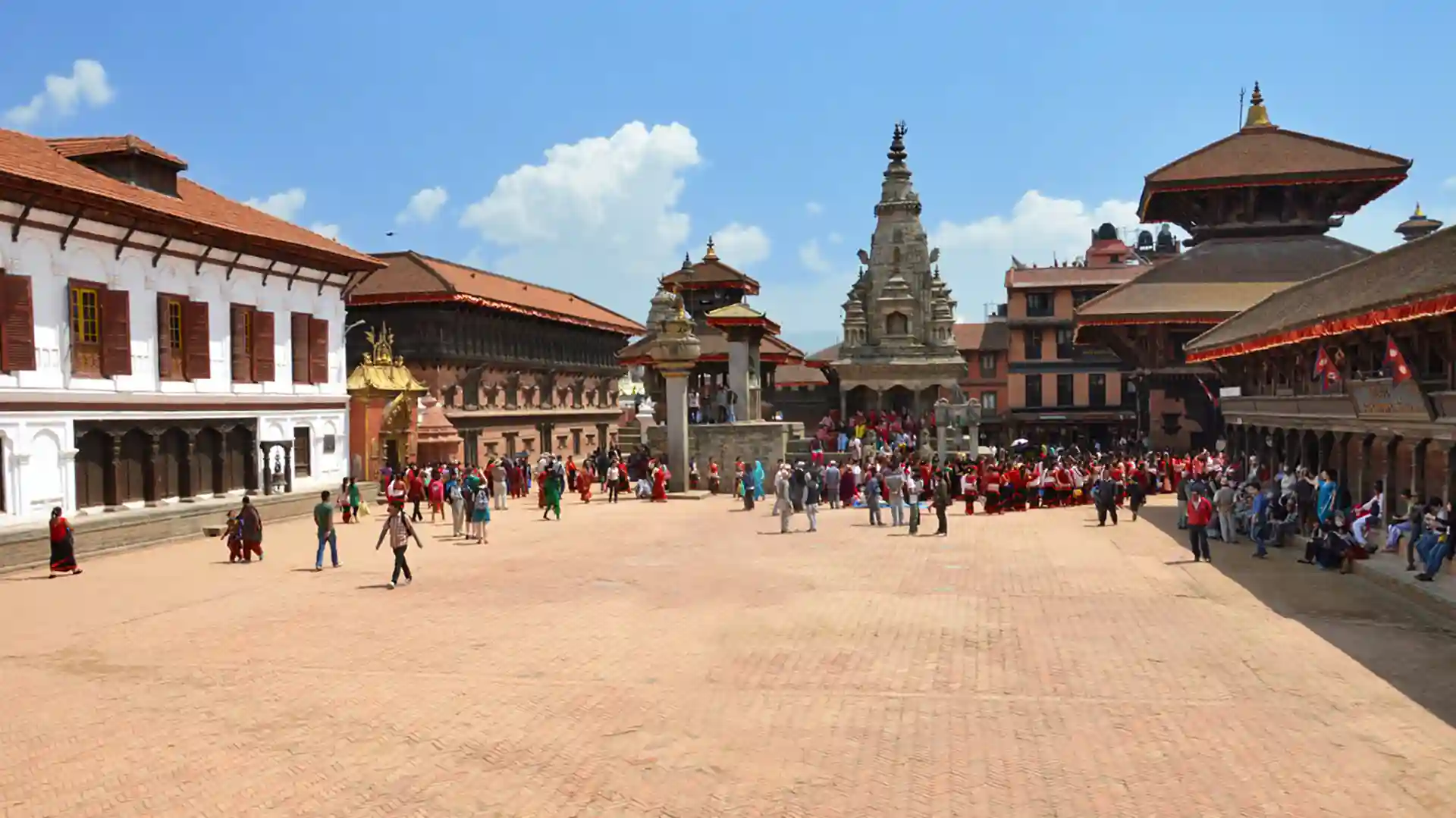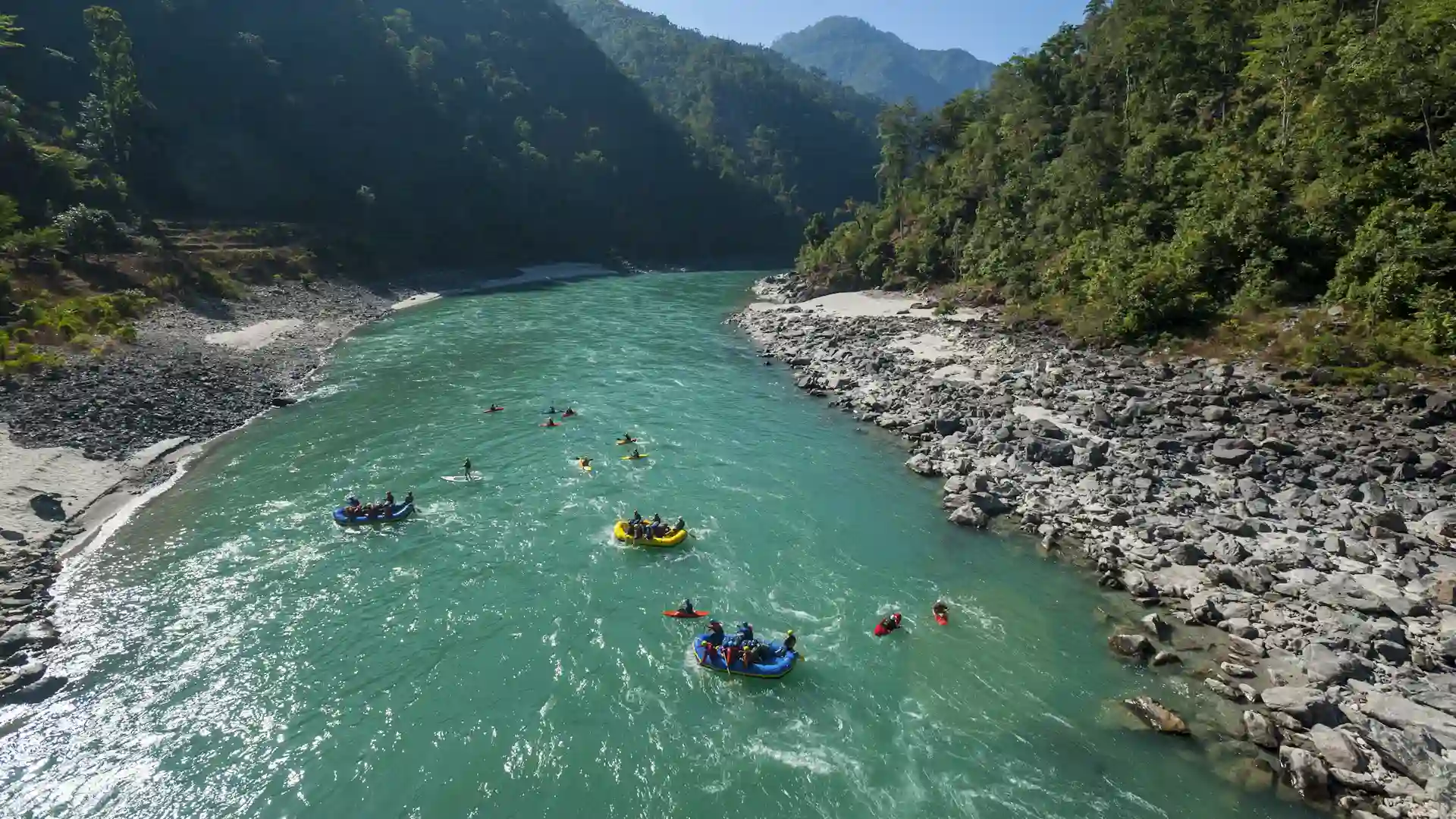Nestled between the towering peaks of the Himalayas and the lush jungles of the Indian plains, Nepal is a land of breathtaking beauty, rich culture, and boundless adventure. Whether you’re a seasoned trekker, a spiritual seeker, or someone simply looking to soak in the serene landscapes, Nepal has something magical to offer. As we step into 2024, let’s dive into the ultimate travel guide to Nepal, ensuring your journey to this enchanting country is unforgettable.
Why Nepal?
Nepal is not just a destination; it’s an experience. Imagine waking up to the sight of snow-capped peaks, wandering through ancient temples and monasteries, and being greeted by some of the friendliest people on the planet. From the bustling streets of Kathmandu to the tranquil trails of the Annapurna Circuit, Nepal offers a tapestry of experiences that cater to every traveler’s soul.

When to Visit
The best time to visit Nepal largely depends on what you want to do.
Spring (March to May): This is one of the most popular times to visit. The weather is warm, and the rhododendrons are in full bloom, painting the hills in vibrant colors. It’s an ideal time for trekking and exploring the outdoors.
Autumn (September to November): Another peak season, autumn offers clear skies, stunning mountain views, and pleasant temperatures. It’s perfect for trekking, sightseeing, and cultural festivals.
Winter (December to February): While it’s colder especially in mountainous regions, winter season has its own charm in Nepal. It has clear skies as a glass surface of ice and track less crowded.
Monsoon (June – August): During this period there are heavy rains hence considered as low season. However it can be a unique experience with dense green forests as well as few tourists especially for those interested in cultural experiences and lower altitude treks.
Getting There and Around
By Air: Tribhuvan International Airport in Kathmandu serves as the main international gateway. A number of airlines operate flights from major cities around the globe.
By Land: Nepal shares borders with India and China where several entry points exist for people who come via overland route though Sunauli border with India is most frequented by many tourists.
Getting Around: In Nepal you can travel by domestic flights or use buses or even taxis they also have motorbike which move to any direction including outside the town centers. The easiest way to get to remote areas is through domestic flights,.while buses and taxis are great for shorter distances. For the adventurous, renting a motorbike is a thrilling way to explore.
Top Destinations
Cultural heart of Nepal; bustling metropolis rich in history and spirituality. The UNESCO World Heritage Sites to visit are Swayambhunath (Monkey Temple), Pashupatinath Temple, Boudhanath Stupa, and the ancient cities of Patan and Bhaktapur.
Gateway to the Annapurna region; a beautiful city with tranquil lakes and breathtaking views of mountains. Good for paragliding, boating, exploring caves and waterfalls.
Chitwan National Park: Chitwan is a wildlife enthusiast’s paradise with Bengal tigers, one-horned rhinos and a variety of bird species. You can take a jungle safari or ride an elephant or go on a canoe ride in Rapti River.
The birthplace of Lord Buddha, Lumbini is a pilgrimage site for Buddhists from all over the world. Sacred gardens, monasteries and Maya Devi Temple are worth exploring here.
Everest Region: Mt Everest is simply part of Nepal experience you cannot miss it out. Go trekking up to Everest Base Camp; visit villages belonging to Sherpa people; enjoy scenic views over the highest mountain in the world.

Trekking in Nepal
Nepal is a trekker’s paradise, with trails that offer everything from challenging climbs to leisurely walks.
Kathmandu Valley: This is the cultural heart of Nepal, a busy city that has always experienced a lot of spiritual and historical wealth. These include the Monkey Temple (Swayambhunath), Pashupatinath Temple, Boudhanath Stupa and ancient cities like Patan and Bhaktapur.
Annapurna Circuit: The Annapurna Circuit is famous as one of the most common treks for its varied landscapes running from subtropical forest to high altitude desert. Finally, you will be taken on a journey through beautiful villages, lush valleys and across Thorong La Pass which sits at an elevation of 5,416 meters.
Everest Base Camp: Many people dream about this trek. To this end, it goes via Sherpa’s village to historic monasteries leading right up to the foot camps of highest mountain in planet earth. However, the hike is quite demanding but very much worthwhile afterwards.
Langtang Valley: Less populated than Everest or Annapurna areas, Langtang has breathtaking views as well as rich biodiversity and local Tamang culture.
Ghorepani Poon Hill: It is also ideal for those who have limited time but want shorter trails. At sunrise especially, on top of your chosen route either Dhaulagiri or Annapurna range among others can be viewed from Ghorepani Poon Hill.
Cultural Experiences
Festivals: Nepal’s cultural calendar is packed with festivals. Dashain, Tihar, Holi, and Teej are some of the major ones. Each festival is celebrated with unique rituals, music, dance, and feasts.
Cuisine: Nepali food is a delicious blend of flavors. Don’t miss trying momo (dumplings), dal bhat (lentil soup with rice), and Newari cuisine. The streets are also dotted with vendors selling samosas, chaat, and other tasty snacks.
Homestays: For a deeper cultural immersion, consider staying in a homestay. This gives you a chance to experience Nepali hospitality, learn about local customs, and enjoy home-cooked meals.

Adventure Activities
Paragliding: Soar above the lakes and valleys of Pokhara with tandem paragliding. The views are spectacular, and it’s an experience you won’t forget.
White-Water Rafting: Nepal’s rivers offer some of the best white-water rafting experiences in the world. The Trishuli and Bhote Koshi rivers are popular spots for this thrilling activity.
Bungee Jumping: For the ultimate adrenaline rush, try bungee jumping from one of the world’s highest suspension bridges over the Bhote Koshi River.
Mountain Biking: Explore the rugged terrains and scenic trails around Kathmandu, Pokhara, and beyond. Mountain biking is a great way to see the countryside and get your heart pumping.
Tips for Travelers
Visa: Most visitors can get a visa on arrival at Kathmandu airport or apply online. Make sure your passport is valid for at least six months.
Health: It’s advisable to get vaccinations for hepatitis, typhoid, and tetanus. Altitude sickness is a risk in higher regions, so take necessary precautions and acclimatize properly.
Currency: The Nepali Rupee (NPR) is the local currency. ATMs are widely available in cities, but it’s a good idea to carry cash when traveling to remote areas.
Packing: Layered clothing is key due to the varying temperatures. Don’t forget essentials like a good pair of hiking boots, a warm jacket, and a first-aid kit.
Respect Local Customs: Nepal is a conservative country. Dress modestly, especially when visiting temples and religious sites. Always ask for permission before taking photos of people.
Nepal is more than just a destination; it’s a journey of the heart and soul. From the towering peaks of the Himalayas to the bustling markets of Kathmandu, every corner of this country has a story to tell. As you plan your trip in 2024, embrace the spirit of adventure, respect the local culture, and open your heart to the warm hospitality of the Nepali people. Whether you’re seeking thrill, peace, or a bit of both, Nepal promises an experience that will stay with you long after you’ve left its borders. Safe travels!

